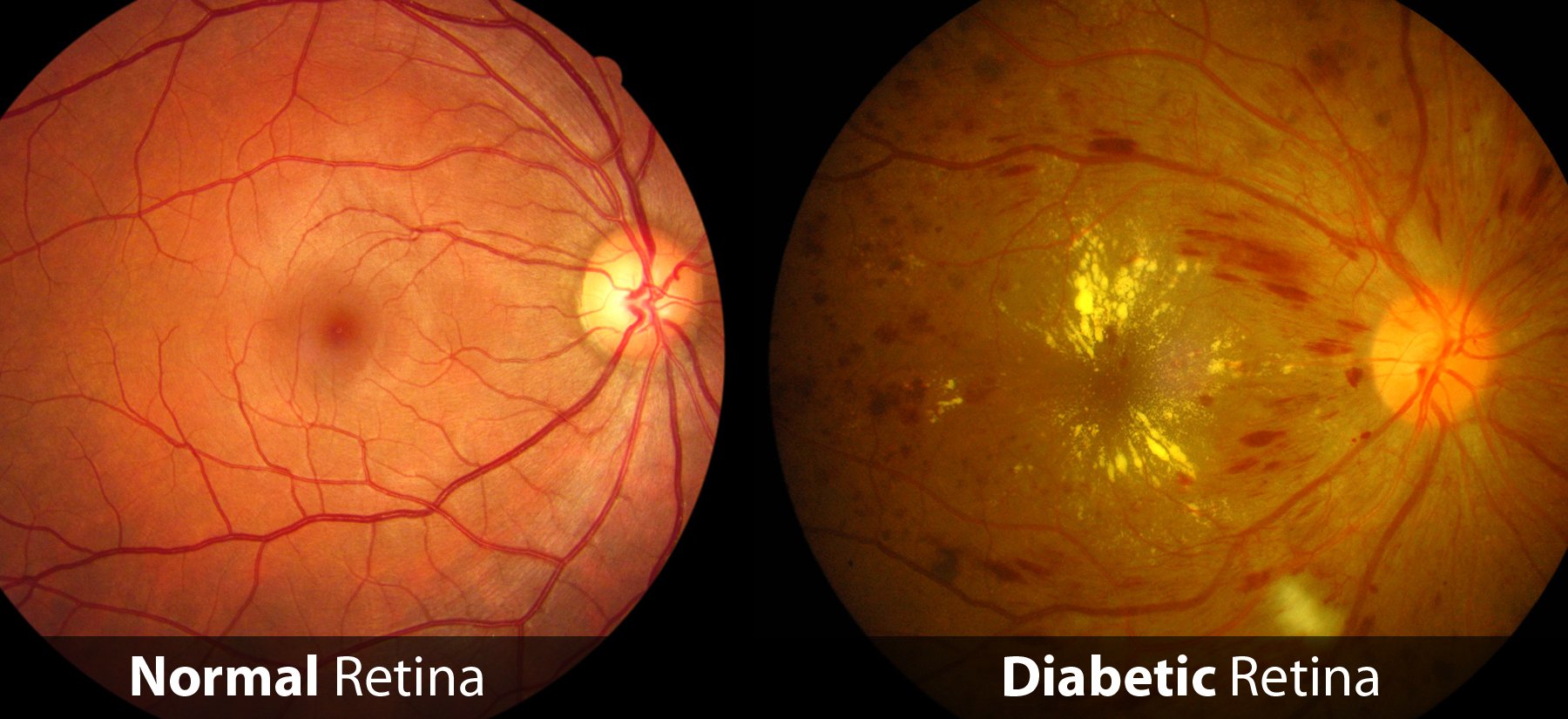Diabetes
I attended a webinar last night via Zoom as we are all now accustomed to doing so since COVID made our shores. It was hosted by a local Ophthalmologist whom I’ve known for many years and he presented an interesting case of a young woman with diabetic retinopathy who was also pregnant. This case highlighted the need to monitor the retina of both eyes very closely and frequently as changes can occur rapidly and without appropriate and timely treatment vision can deteriorate dramatically.
Diabetic retinopathy is classified in various stages beginning with dot and blot haemorrhages as can be seen in the retinal image above on the right presenting like red ink-blots and hard exudates that you can also see as yellow spots on the retinal image. 1 Diabetic retinopathy can progress to having cotton-wool spots as the naming describes looking like cotton-wool, intra-retinal micro-vascular abnormalities (IRMA) as well as neovascularisation otherwise known as new blood vessels forming and macular oedema where there is fluid in the central region of the retina that can greatly threaten vision without treatment.1
As an Optometrist I am trained to assess the retina and evaluate for any early signs of diabetic retinopathy as well as any progression and certainly refer to a sub-specialist Ophthalmologist for further evaluation and treatment. I strongly recommend digital retinal imaging as it is the most accurate way of pertaining any changes between examinations as well as a dilated fundus examination to evaluate the peripheral retina.
In terms of treatment, this patient that presented as a case study did have Pan-retinal photocoagulation (PRP) laser as using an Anti-VegF injection into the eye is contra-indicated in this case being pregnant and with careful monitoring and appropriate treatment her vision was largely preserved.
There are other changes that can occur with diabetes such as early cataracts and neovascular glaucoma that also need to be assessed which is part of my regular diabetic examination. Certainly regular monitoring and appropriate type and level of medication for diabetes is essential with your General practitioner and endocrinologist to maintain your health and sight.
The Wills Eye Manual (3rd Ed) 1999. D.J Rhee & M.F Pyfer.

